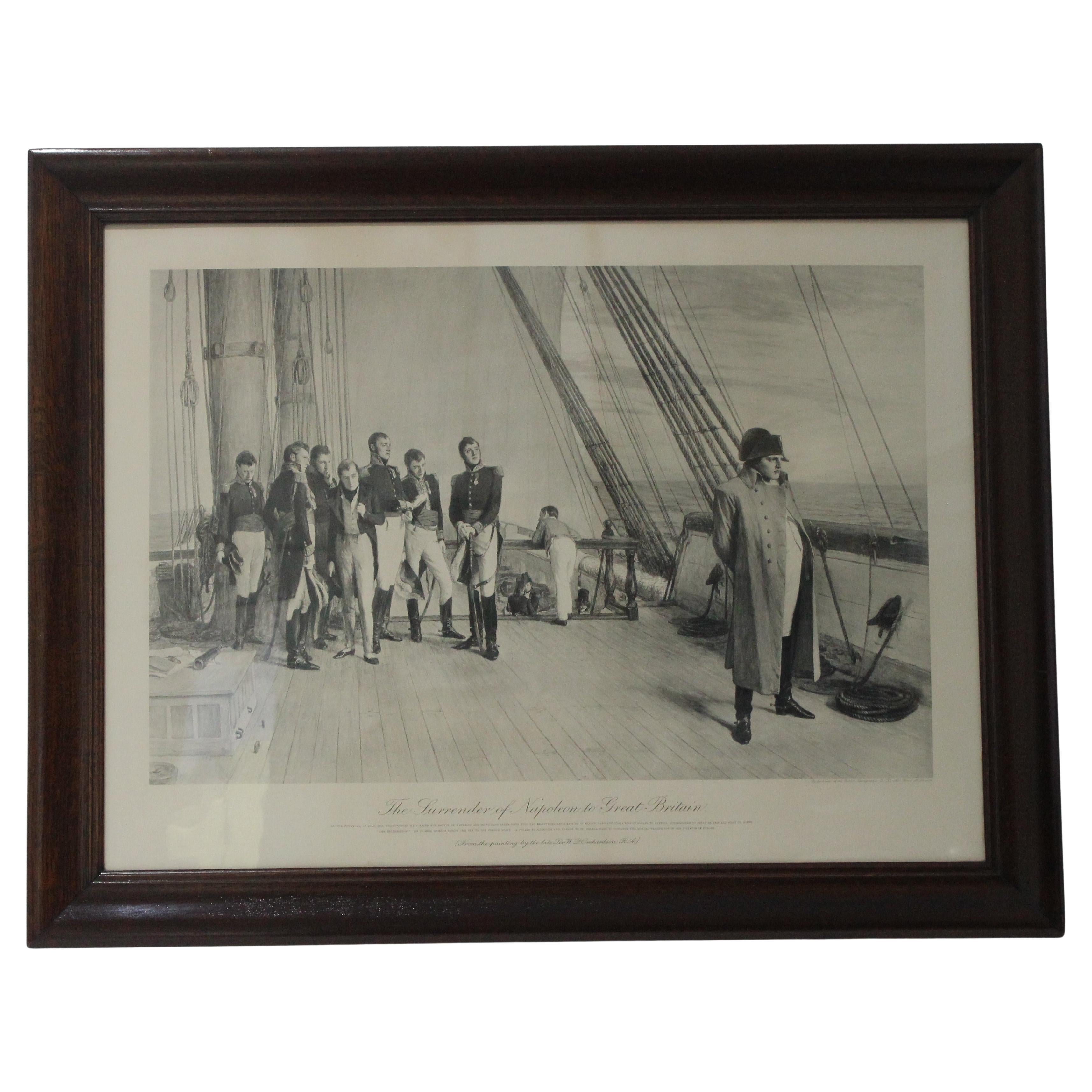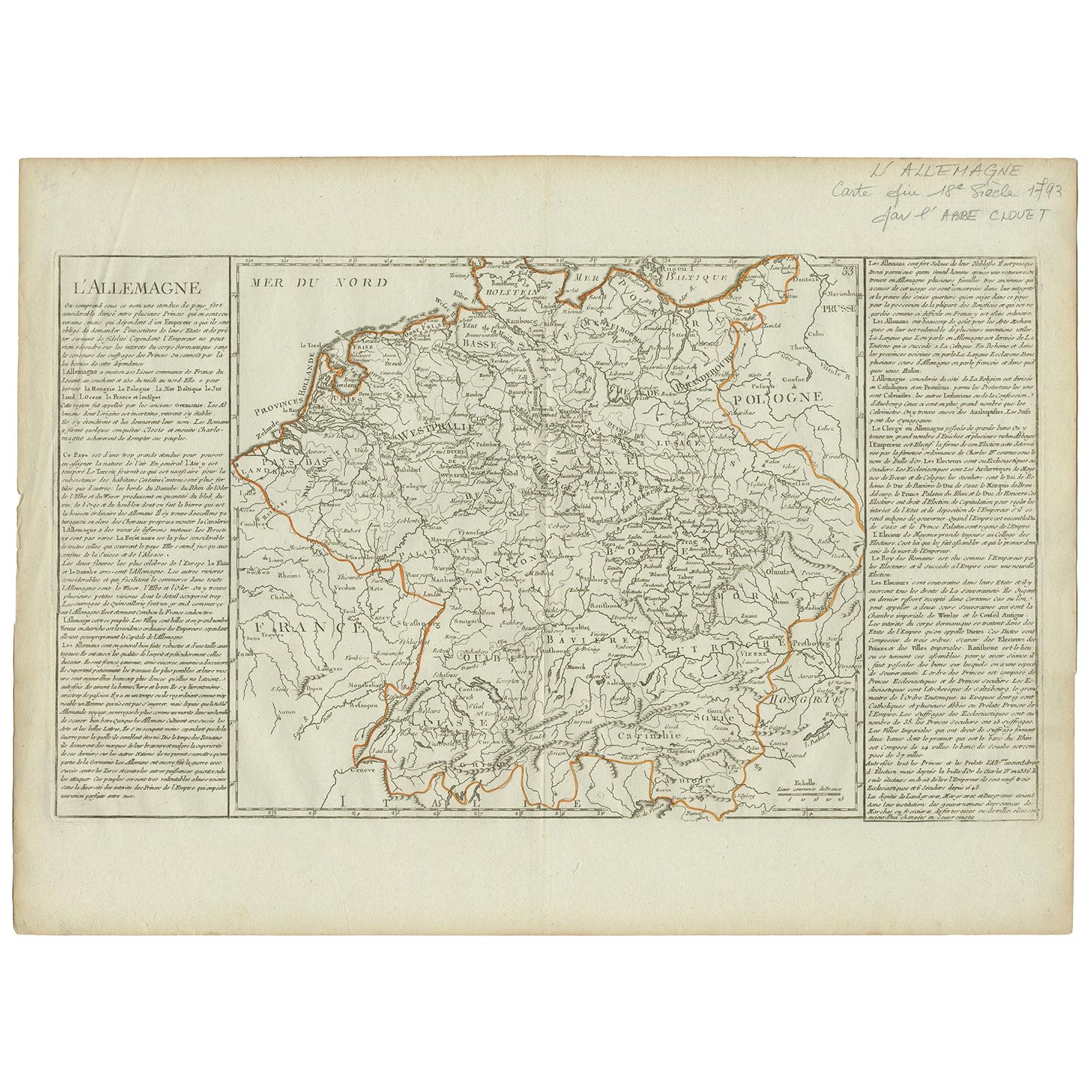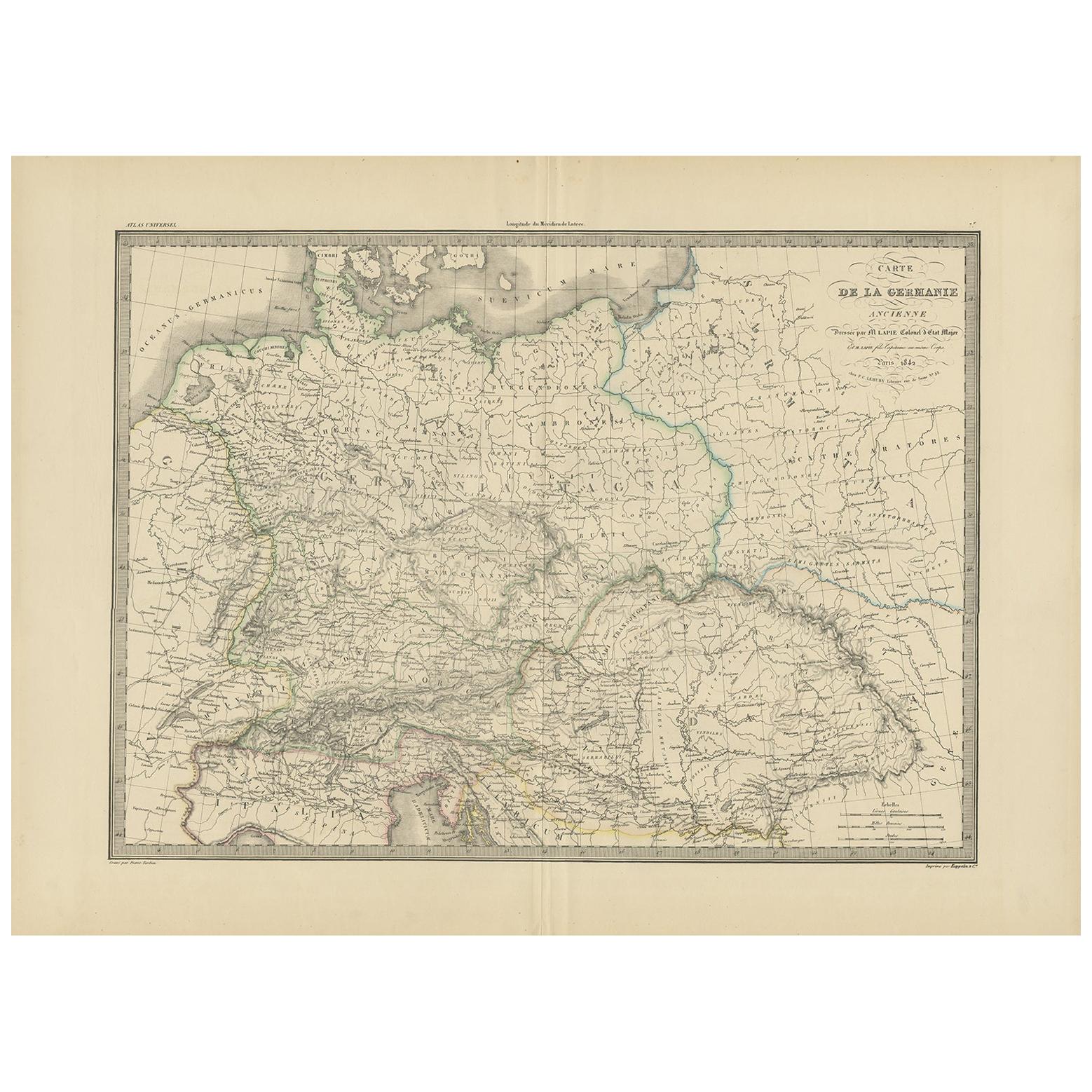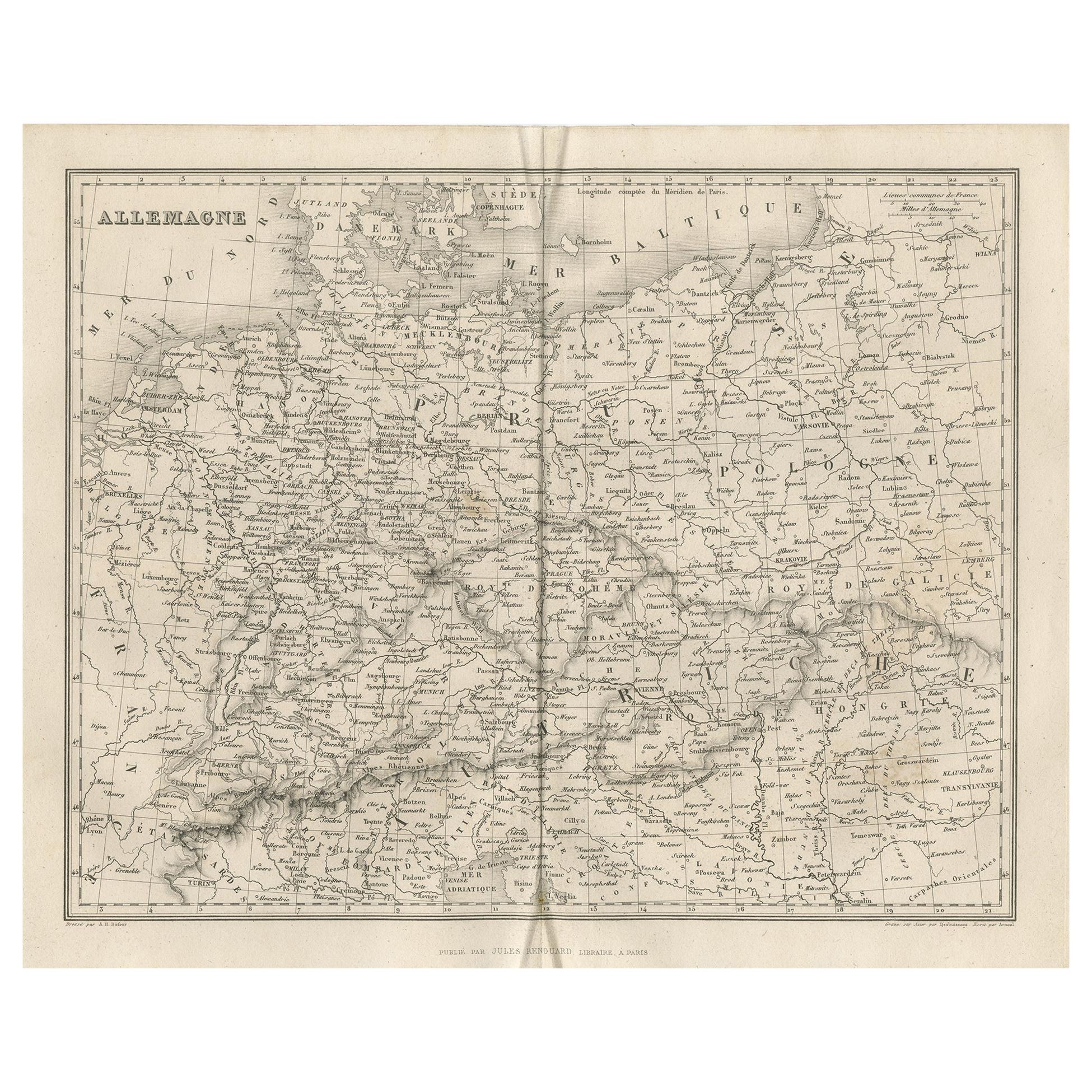Items Similar to Antique Photogravure of a Tierbude or Circus Zoo by Paul Meyerheim German Artist
Want more images or videos?
Request additional images or videos from the seller
1 of 10
Antique Photogravure of a Tierbude or Circus Zoo by Paul Meyerheim German Artist
About the Item
An antique photogravure print of the painting Tierbude by German artist Paul Friedrich Meyerheim (1842 - 1915). A Tierbude is a German traveling menagerie, a hybrid of circus and zoo. Such “shows” sometimes included taxidermy exhibits. See the shark suspended? I'm still not sure how I feel about the circus or the zoo. Yes, I understand that people and animals can live in harmony and we have a responsibility to protect animals. But to live your life in a cage. On display. It hurts my heart. Not to mention the people who were also put on display and kept in cages. I have no words. I will say that art is a powerful medium and we must not erase its message because we do not want to hear it. That being said, I offer to you this work and its history. I had not heard of a photogravure before and so I learned from the Bosham Gallery site, that "Photogravure printing was invented in 1879 by Czech painter Karel Klíč, and peaked in popularity around 1900. The method produced very high-quality, stable prints using a combination of photographic and etching techniques, and was widely regarded as the most beautiful and luxurious means of printing the photographic image in ink." This print that I offer to you is no exception. The quality is really something special. The details. I could spend hours upon hours pouring over the intricacies of this work and still not absorb it all. I found a biography on the artist on the Kunkel Fine Art website which I'll share with you here, "Paul Meyerheim was one of the most important animal painters of the second half of the nineteenth century. Aged only eighteen and a student of the Academy of Arts in Berlin, he made his debut at the Berlin Art Exhibition with a painting titled Interieur mit Hund [Interior with Dog]. The work, now in the Albertinum in Dresden, anticipated the direction his artistic career was to take. Zirkusvorstellung [Circus Act], a painting which combines an exotic menagerie and a crowd of spellbound spectators, was executed a year later (Nationalgalerie Berlin). In 1866, Meyerheim achieved a major success outside Germany when he was awarded a Gold Medal at the Paris Salon for his painting Menagerie. In powerfully narrative paintings like these he was to open up new perspectives for the animal genre and forge a reputation as its leading representative. Meyerheim spent the years 1865-6 in France, where he studied Realism and the painting of Gustave Courbet and also explored the new landscape approach developed by the painters of the Barbizon school. He intensified his interest in landscape painting and travelled widely in search of motifs. Particularly attracted by Alpine subjects, he undertook several study trips to Switzerland and was often accompanied by his mentor and friend Adolph Menzel. In a painting of 1875 titled Ochsengespanne in einem Steinbruch [Teams of Oxen in a Quarry] Meyerheim’s broad, firm brushwork masterfully conveys the harsh surface of rock. A further example of his landscape skills is the painting Kohlenmeiler im bayerischen Gebirge [In the Bavarian Alps] executed in 1878. Later, he travelled further afield on study trips to Italy and Egypt. The 1870s saw Meyerheim firmly established in Berlin social and artistic circles. He was called on to paint murals and ceiling paintings for important decorative projects. He received a commission from the industrialist and railway magnate August Borsig to paint seven large-format panels on copper illustrating the Lebensgeschichte der Lokomotive [Life History of a Locomotive]. Executed between 1873 and 1876, the panels are now held at the Märkisches Museum in Berlin. Meyerheim’s cycle ranks alongside Menzel’s painting Eisenwalzwerk [The Iron-Rolling Mill, or ‘The Modern Cyclops’] of 1875 (Nationalgalerie Berlin) as a major contribution by a Berlin-based artist to the development of industrial themes in painting. Throughout his life, Meyerheim’s preferred subject was the animal world, which he would study on regular visits to the Berlin Zoo. This made him ideally suited for the job of illustrating the first volumes of Brehms Tierleben. He worked on the illustrations from 1864 to 1869. The monkey species particularly fascinated Meyerheim and he often endowed the monkeys in his paintings with human traits. He excelled in the portrayal of lions, occasionally showing them in captivity but usually depicting them in the wide steppe and savannah landscapes of their natural habitat. He returned frequently to the subject matter of his early career – menagerie scenes and depictions of fairground booths. The vibrancy of his paintings derives from his accurate representation of animal anatomy and his lively rendering of the psychological reactions of the spectators. His highly scenic compositions are marked by an underlying humour and, in common with Menzel, incisively realistic detail. When Meyerheim took over the animal painting class at the Hochschule für bildende Künste in Berlin in 1887 he made it mandatory for his students to study animals from life at the Zoo. Two of his best-known pupils are August Gaul and Wilhelm Kuhnert. Both artists were to build on his artistic heritage and carry it forward into the modern era." The visible art area measures about 12.5" wide by 9.5" high. It looks to be printed on a very fine tissue.
- Dimensions:Height: 18.25 in (46.36 cm)Width: 21.75 in (55.25 cm)Depth: 1 in (2.54 cm)
- Materials and Techniques:
- Place of Origin:
- Period:
- Date of Manufacture:1880's
- Condition:Wear consistent with age and use. Minor losses. In good antique condition. There appears to be a tear visible. Print has not been examined out of the frame.
- Seller Location:Atlanta, GA
- Reference Number:1stDibs: LU7240235787212
About the Seller
5.0
Vetted Seller
These experienced sellers undergo a comprehensive evaluation by our team of in-house experts.
Established in 2002
1stDibs seller since 2022
60 sales on 1stDibs
Typical response time: <1 hour
- ShippingRetrieving quote...Ships From: Atlanta, GA
- Return PolicyThis item cannot be returned.
More From This SellerView All
- Monumental French Color Print by Henri Riviere Late 19th or Early 20th CenturyLocated in Atlanta, GAA late 19th or early 20th Century monumental color print by French artist Henri Riviere (1864 - 1951). The print shows a man and his horse in the French countryside, haystacks visibl...Category
Early 20th Century French Prints
MaterialsPlexiglass, Wood, Paper
- Monumental French Color Print by Henri Riviere Late 19th or Early 20th CenturyLocated in Atlanta, GAA late 19th or early 20th Century monumental color print by French artist Henri Riviere (1864 - 1951). The print shows a figure under an umbrella walking in a landscape with building...Category
Early 20th Century French Prints
MaterialsWood, Paper, Plexiglass
- 19th C English Print by H. Strafford of Three South Down Wethers Kulicke FrameBy Robert KulickeLocated in Atlanta, GAThis is where the antique mixes with the modern. Where worlds collide and give rise to something fresh, new and unique. A mid 19th century British print by Henry Strafford presented ...Category
Antique Mid-19th Century English Prints
MaterialsMetal
- 19th Century British Print of Improved Lincolnshire Sheep in Kulicke FrameBy Robert KulickeLocated in Atlanta, GAThis is where the antique mixes with the modern. Where worlds collide and give rise to something fresh, new and unique. A mid 19th Century British print presented in a Kulicke frame which had it's origins in the mid 20th Century in America. This print of Improved Lincolnshire Sheep printed...Category
Antique Mid-19th Century English Prints
MaterialsMetal
- 19th Century English Tinsel Print Portrait of Actor Retailed Saxon and ClemensLocated in Atlanta, GAA mid 19th century English full length portrait tinsel print hand colored and hand embellished, framed and retailed by Saxon and Clemens of New York City circa mid 20th century. This print depicts, "Mr. Freer as Marmion". This is one of three tinsel prints that I have available on my HKFA storefront here on 1stdibs. From the Robertson Davies Collection website, I would like to share with you this fascinating history of tinsel prints, "As the popularity of these prints became wide spread, bags of prepared tinsel decorations were sold along with the prints making them customizable by the purchaser. Thus after the tinseling process, no two prints would be identical. Tinsel prints emerged from the tradition of toy theatres. Once an appropriate model theatre was purchased, the public could buy prints depicting actors, actresses and scenery from plays that were being performed at the time and recreate those plays in their home. As the "juvenile drama" became popular, play books were published along side prints so the words of the plays could be recreated as well. While the genre flourished the desire to purchase a larger print of a specific actor or actress remained. Thus two types of theatrical prints became to be printed: those for juvenile dramas that were small and excluded specific actors names, and actors portraits that were larger and more individualized. In the larger theatrical portraits, characters were "always displayed full length" and "striking [a] habitual and dramatic pose". The 1830's marked the emergence of tinseling prints as a past time. Before this time, if an individual wished to embellish a portrait, individual sheets of metal foil would have to be purchased, measured and cut to fit an individual print. Once tinseling became common, different packages of precut tinsel (specific to the print)would be sold with each print as aforementioned. The term tinsel specifically refers to the metal sheets used to represent armor and weapons, but more broadly includes pieces of satin, silk, velvet, leather, and feathers among other embellishments. Although tinsel prints are now viewed as works of art, in the nineteenth century they were no more than a child's pastime. Most sources cite tinseling, as well as toy theatre, as being most popular among boys from the working class. Their popularity among boys could explain why male portraits were produced more frequently than female, however, it is more likely that male costumes, with their multiple pieces of armor and arms...Category
Antique Mid-19th Century English Prints
MaterialsMetal, Brass, Foil
- 19th Century English Tinsel Print Portrait of Actor Retailed Saxon and ClemensLocated in Atlanta, GAA mid 19th century English full length portrait tinsel print hand colored and hand embellished, framed and retailed by Saxon and Clemens of New York City (original paper backing has been lost to time, however this print is similar to two others both from Saxon and Clemens) circa mid 20th century. This print depicts, "Mr. Collins as Sir Reginold the Bold in the Giant of Palestine". This is one of three tinsel prints that I have available on my HKFA storefront here on 1stdibs. From the Robertson Davies Collection website, I would like to share with you this fascinating history of tinsel prints, "As the popularity of these prints became wide spread, bags of prepared tinsel decorations were sold along with the prints making them customizable by the purchaser. Thus after the tinseling process, no two prints would be identical. Tinsel prints emerged from the tradition of toy theatres. Once an appropriate model theatre was purchased, the public could buy prints depicting actors, actresses and scenery from plays that were being performed at the time and recreate those plays in their home. As the "juvenile drama" became popular, play books were published along side prints so the words of the plays could be recreated as well. While the genre flourished the desire to purchase a larger print of a specific actor or actress remained. Thus two types of theatrical prints became to be printed: those for juvenile dramas that were small and excluded specific actors names, and actors portraits that were larger and more individualized. In the larger theatrical portraits, characters were "always displayed full length" and "striking [a] habitual and dramatic pose". The 1830's marked the emergence of tinseling prints as a past time. Before this time, if an individual wished to embellish a portrait, individual sheets of metal foil would have to be purchased, measured and cut to fit an individual print. Once tinseling became common, different packages of precut tinsel (specific to the print)would be sold with each print as aforementioned. The term tinsel specifically refers to the metal sheets used to represent armor and weapons, but more broadly includes pieces of satin, silk, velvet, leather, and feathers among other embellishments. Although tinsel prints are now viewed as works of art, in the nineteenth century they were no more than a child's pastime. Most sources cite tinseling, as well as toy theatre, as being most popular among boys from the working class. Their popularity among boys could explain why male portraits were produced more frequently than female, however, it is more likely that male costumes, with their multiple pieces of armor and arms...Category
Antique Mid-19th Century English Prints
MaterialsFoil, Brass, Metal
You May Also Like
- Antique Golf Portrait, Charlie Hunter of Prestwick, PhotogravureBy Robert Cree CrawfordLocated in Oxfordshire, GBCharlie Hunter, golf club maker, Prestwick. Robert Cree Crawford, A fine photogravure by Annan & Sons, after the painting by R.C. Crawford, of the famo...Category
Antique Early 1900s English Sporting Art Sports Equipment and Memorabilia
MaterialsPaper
- Photogravure of Napoleon BonaparteLocated in West Palm Beach, FLThis stylish and somber photogravure dates to the late 19th century, and was created from an oil painting by Sir William Q. Orchardson. The photogravure depicts Napoleon Bonaparte...Category
Antique Late 19th Century English Empire Revival Prints
MaterialsGlass, Oak, Paper
- Antique Print of German Republican Trial or 'Strenge', C.1850Located in Langweer, NLAntique print titled 'Republikanische Strenge'. Original antique print of a trial (?). Source unknown, to be determined. Published circa 1850. Artists and Engravers: Engraved by L...Category
Antique 19th Century Prints
MaterialsPaper
- Antique Map of Germany by Clouet, 1787Located in Langweer, NLAntique map titled 'L'Allemagne'. Antique map of Germany. Originates from 'Geographie moderne avec une introduction' by J.B.L. Clouet.Category
Antique Late 18th Century Maps
MaterialsPaper
- Antique Map of Germany by Lapie, 1842Located in Langweer, NLAntique map titled 'Carte de la Germanie Ancienne'. Map of Germany. This map originates from 'Atlas universel de géographie ancienne et moderne (..)' by...Category
Antique Mid-19th Century Maps
MaterialsPaper
- Antique Map of Germany by Johnston '1909'Located in Langweer, NLAntique map titled 'Empire of Germany'. Original antique map of Germany. With inset maps of Frankfurt and Munich. This map originates from the ‘...Category
Early 20th Century Maps
MaterialsPaper





